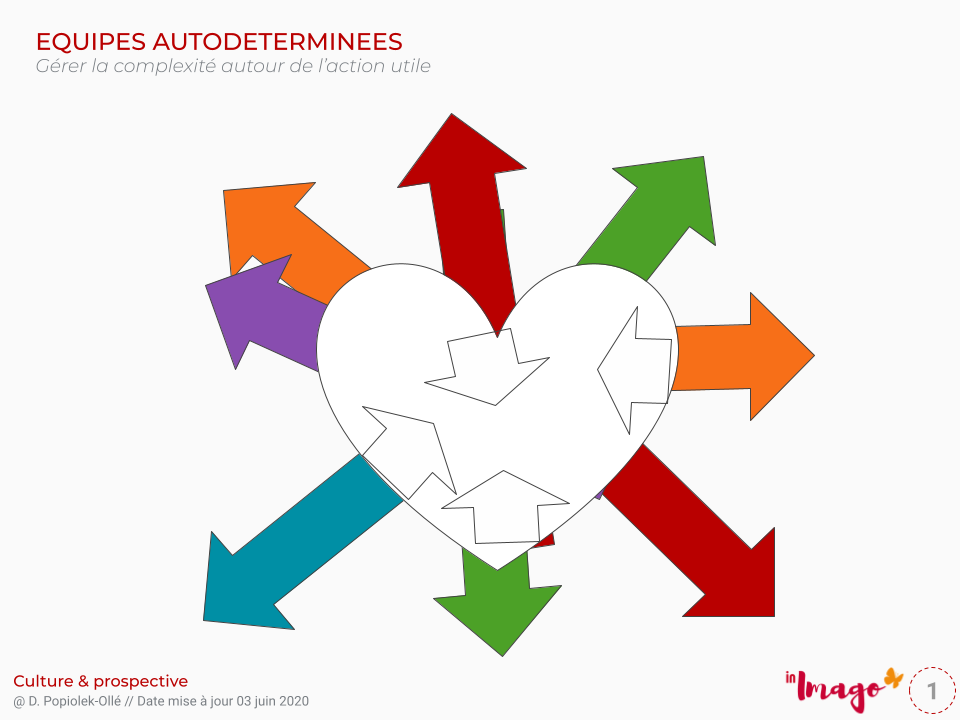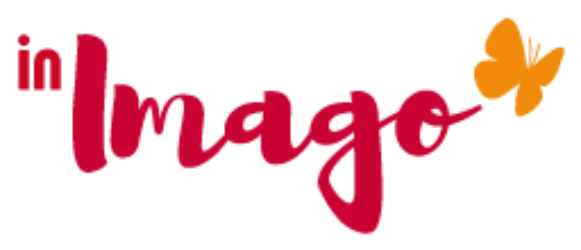“When we face the problems of tomorrow with the organizations of yesterday, we reap the tragedies of today.”
Michel Crozier
Uncertainties, crises, gloom, remote work and loneliness, precariousness, digital transformation, loss of meaning… are all factors that generate stress, loss of motivation, and even disengagement of employees. But this is not inevitable !
Managers, support your teams:
It is a challenge to take up to promote commitment, by imagining new ways of producing, of innovating … through reflection and the participation of all players in the value chain, the mobilization of strategic management is a sine qua non.
Hero’s Journey, Rituals, Agility… Managers find the way you work with your teams to maintain motivation and efficiency.
3 figures clearly create a debate
- 6% ! This is the very (very) low proportion of employees declaring themselves engaged in their business in France, according to the highly publicized Gallup study 2017
- Failure… at 60% ! More than half of transformation projects fail or are stopped before producing meaningful results.
- 14.580 €. This is the cost per employee of disengagement, according to a 2019 Apicil / Mozart consulting study.
Uplifting, right ?!
The (optimistic) flip side of the coin is that there is a lot of work ahead and that the tools and solutions available to managers to boost their teams do exist!
What if French employees were more committed than you might think!
Develop your discernment, by challenging information!
Committment : what is it ?
The motivation of an employee can be summed up as follows: to do his job as best as possible, within the framework of the contract signed with his employer. The commitment goes beyond….
In addition to their desire to achieve their goals, a committed employee is involved in contributing to the development, promotion and sustainability of the company. This commitment is based on 5 fundamental pillar :
- The pride of belonging
- The spontaneous recommendation of the company by the employee in its networks. He is the employer brand ambassador!
- Understanding the strategy: understanding the meaning of your work is essential to adhere to the values of the company.
- Adherence to the objectives of the company
- Investment in work, which goes without saying if pride of belonging, recommendation, understanding and adherence are present.
Employee engagement :
As we saw in the introduction, the numbers are edifying and can be explained:
- It’s an incentive to get moving
Fostering commitment, motivating, building a new way of producing, of innovating, requires the contribution of all actors in the value chain. Collective reflection and participation, mobilization of strategic management are the key words of this transformation. There are many tools and solutions to give everyone back desire, meaning and commitment. This letter offers you an overview, not exhaustive, adaptable to the context of your business
- It’s about mobilizing everyone
To create a collaborative, innovative, vibrant society.
Everyone can mobilize to face the challenges. We must create the conditions for employee engagement in terms of cooperation and innovation, by rethinking the organization of the company and the conditions for each employee’s engagement.
- Invite to mobilization
The usual mobilization factors (creating a friendly atmosphere, listening, promoting, encouraging autonomy, setting priorities, etc.) are no longer sufficient. You have to be on the move, take into account the inside and the outside, offer meaning and authenticity. The company must rethink itself and implement a lively, harmonious and committed management.
Facing your future, experiencing this transformation, leaving your comfort to embark on your managerial journey requires courage and conviction. Once hired, managers, you will mobilize your teams and lead them towards a renewal, a viable organizational overhaul adapted to the current context.
Of course, if it is your desire and the company’s project!
Read full article
Support your team
It is a balance to be found between each of the stakeholders and the organization itself.
For this, the manager will deal with:
- The present situation (stressful? Competitive? Motivating?)
- Everyone’s emotions
- Adapted behaviours
- His resources and those of his team
We offer on this site a toolbox, suggestions, free courses to invite you to discover different universes :
Rituals, Inclusion-declusion, Serenity bubbles, Agility, Leap. So many methods to allow everyone to find their place, introduce a link, identify points of resilience, experiment, put the organization in motion, involve everyone in change.
… Make sure you are welcome, Manager !
The link after COVID, does it still make sense ?
Everyone has learned somehow to work from home and, for many, getting back to work in September is not necessarily easy.
Well, it’s a known syndrome:
Cabin syndrome (also called snail syndrome), which is the fear of leaving your place of confinement.
In this context of the Covid-19 epidemic, this syndrome concretely echoes the fear of deconfining oneself and of confronting the outside world.
Here, the hut or the snail’s shell represents a small setting in which, for 8 weeks, we felt protected from any external aggression.
“This syndrome is not new, it was theorized at the beginning of the 20th century after the Gold Rush which began in 1948 in the United States in California.
At that time, men left for several months to look for the precious nuggets and slept in small makeshift huts completely isolated from civilization. On their return, they felt a certain mistrust of the people around them, a fear of social life as well as a nostalgia for their reclusive life.“, tells Johanna Rozenblum.
It is also a syndrome visible after a long hospitalization or in certain professions such as lighthouse keepers.
Discover the article on this topic of Journal des Femmes
Stay informed
Stay informed of the blog’s news from the angle that interests you::
- Focus Extensio : development of your organization
- Focus Intensio : team development
- Focus Mago : development of your personal Magician, individual development
Statistics why do ?
French employees are less disengaged than we say

Nicolas Arnaud, Audencia and Thibaut Bardon, Audencia
6% is the (meager) proportion of French employees who say they are committed to work, according to the results of the last Gallup 2017 study on work in the world.
More seriously, this commitment has deteriorated in recent years, since this rate was 9% two years earlier, which would consequently slow down the performance of companies.
Because these figures did not correspond at all to what we observed on a daily basis in the field during our qualitative studies conducted for more than 10 years, we wanted to verify them… quantitatively. We therefore conducted two quantitative studies – administered by the BVA polling institute – with a representative sample of employees (non-manager, non-executive) and French executives.
The results of the first of these studies show that, contrary to what is generally stated, nearly 9 out of 10 employees (87%) feel engaged in their work, of which more than a quarter (26%) say they are very committed. . The study of French leaders only corroborates this result. Indeed, when we ask French managers to assess the level of employee engagement (employees here include all employees who are not managers) in their company, they are almost 9 out of 10 to judge that it is good. or even very good (88% exactly including 62% who believe that employees are engaged and 26% who say they are very engaged). We are therefore far from the situation described by the Gallup Institute on the level of employee engagement!
A study not totally disinterested …
The Gallup survey can be questioned, not so much from the point of view of statistical analysis, but regarding its initial hypothesis: indeed, these surveys are based on the idea that there is a positive correlation between the level of employee satisfaction with their working conditions, their level of commitment, and the economic performance of companies, in short, a win-win model that is a priori unchallengeable… that we will nevertheless try to discuss!

Motortion Films/Shutterstock
To establish these engagement scores, Gallup relied on a dozen questions on :
- the basic needs of employees to carry out their work
- the support from the hierarchy
- the quality of the work provided by their colleagues and whether they have friends there
- the possibility of evolving in his functions or in his company
From answering these questions, Laragh Marchand, partner at Gallup, says he “established a clear link between these criteria and the level of engagement, which translates into more or less increased individual productivity.”
At this point, two criticisms can be made. On the one hand, we can see that the engagement score is obtained very indirectly by measuring the quality of life at work – and not directly by interviewing the stakeholders and their hierarchy as in the Audencia / BVA studies.
On the other hand, while French employees are among the least engaged in the world according to the Gallup Institute, several studies report that work is a central dimension of French life. According to a 2016 Ipsos study, 91% of them believe, for example, that the “value of work” evokes something positive. Along the same lines, several studies also show that the French are among the most productive employees … in the world! Judging from this: in the United Kingdom, the rate of hires is 11%, which is almost double that in France (6%) … but French employees are more productive than the British according to the latest study by OECD 2017: France is thus 12th in the world with an hourly productivity (GDP per capita / hours worked) of 24.94 € / hour worked, and the United Kingdom 16th with a rate of 21.91 € / hour worked.
In addition, claiming that employees are not currently engaged in the service of the company while proposing managerial innovations supposed to remedy this situation can also be interpreted as a powerful marketing device. The rhetorical game consists of making facts or figures speak to construct a representation of reality which is supposed to be objective but which in fact serves private interests. In this regard, it is worth remembering that the Gallup Institute is both an American polling institute and a consultancy firm.
Resetting the question of meaning
Thus, while the figures reflect a very different reality on the issue of French employee engagement, that does not mean that all is well at the heart of companies. But the idea that a low level of employee engagement is a sufficient indicator to justify the implementation of empowerment approaches must be questioned. In particular, we see that some employees – who may be very committed to their work – simply do not want to take on more responsibilities in the company.
Indeed, the study shows that 79% of French employees do not want to become managers even though they say they are very committed to work (87%). In fact, taking on more responsibilities at work can generate stress, call into question the balance between personal and professional life or may simply not appear to be interesting … and is therefore not necessarily a factor of commitment for employees!
The question of the meaning that individuals give to their work is therefore a complex affair that cannot be summed up in a number, such as that of the level of employee engagement. The risk is very clear: to implement new management practices that are out of step with the way in which individuals give meaning to their work and their place within the company. To avoid this, it is absolutely necessary to put the question of meaning back at the heart of the business!
Nicolas Arnaud, director of the Grande Ecole program, professor of management and strategy, Audencia and Thibaut Bardon, professor, Audencia
This article is republished from The Conversation sous licence Creative Commons. Read the original article.
2- facilitate the emergence of useful action
The useful action
The useful action is “the art of maximizing the number of things not done” as proposed by the Agile Manifesto. Committing teams to simplicity is a guarantee of long-term performance.
It is also a way to organize and save time by giving up without regret what has not been achieved. Not to do is easy to say but how difficult to make people understand: it is a hunt for the useless. Everyone has the impression of losing something or of not having been up to the task …
It is also an art of living, that of Being in the Present. In a Present, which is not already encumbered with things not yet done or things to do, it is an option to stop time. Useful action is the essential action to set in motion. You are FOCUSED, focused on what is needed immediately to make it work.
Useful action and discernment
Discernment is the ability to recognize globally what is favorable to oneself in a given context. Discernment uses the 5 human senses to determine if an action is useful, approximating intuition, and adds an objective assessment.
Discernment is the reflective impact. This is the moment when everyone understands the impact of their intentions on the group and puts them at the service of the collective. All the ideas are brought together, put at the heart of the group project, to build a proposal, an offer open to other players. The useful action is identified and set in motion to serve the entire value chain and to offer a quality service offer.
Implement the useful action
The useful action is the moment when, in all simplicity, each actor of the Team gathers the results of his work and deposits them in the common heart.
It is from this common heart that the learning organization will be able to initiate a movement of wider transformation.

Triggering this mobilization is the challenge sought by living management. It is a harmonic movement where, like in an orchestra, the melodies complement each other to form a harmonious whole.
How to implement it ?
Create harmony
How to create harmonics in your organizations?
1- Establish a learning culture by supporting your management towards a smooth transition
As in a breath, as a manager, I inhale and build and, in an exhale I transmit.
The model below is our 4-step interpretation of two Japanese concepts Shu Ha Ri and Chadō.
This approach allows managers and their teams to enter into a learning organization process and to set up flexible transition management, promoting the emergence of autonomous teams and the emergence of Agile values.
The left part, Shu Ha Ri Do, allows in a cycle of 4 stages, to implement a lasting and wanted change, then to evolve towards the co-construction by having acquired the necessary wisdom to listen attentively to what is proposed by the team.
The cycle continues and improves as the respective learning progresses.
Simplify
The tools of strategic management to simplify promotes communication and the translation of a vision into a strategic plan
Complexity vs Simplicity in management, these are 8 keys to support and transform by deploying a management that mobilizes and engages the team.
« Perfection is achieved not when there is nothing more to add, but when there is nothing more to take away. »
Boost team energy
Collective support and team coaching are practices that make it possible to adjust to find efficiency in group work.
Support, transform is a section to explore techniques, tools and postures and allow managers and their employees to succeed in the challenge of emotional intelligence.
Supporting everyone in their quest for meaning, managing interactions, federating and putting into action are the pillars necessary to move your organization systemically.
Discover all the Support-Transform articles
3- Train yourself!
To train yourself in discernment
We offer you a course on simple subscription to the site to train you to act in conscience and to discern useful actions once and for all.
Manage your interactions
Changing the way you manage, facilitating autonomy, supporting your teams is a start.
Involve and engage teams so that the energy returned remains and turns into commitment
and in success, it is a challenge to be taken up.
“Treat your employees like you treat your best customers”
Stephen Covey

